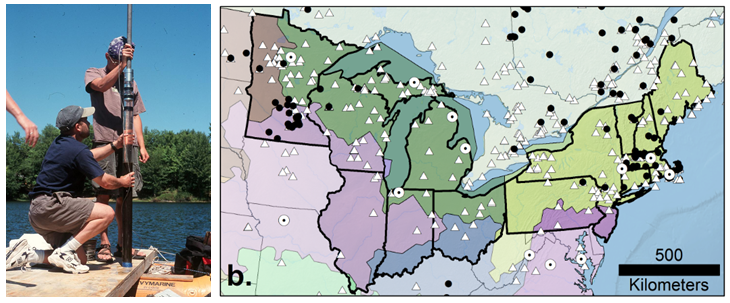
Paleo Data: Incorporating Time into Macrosystems Biology
PalEON aims to incorporate 2000 years of paleoecological data into terrestrial ecosystem models in order to improve how these models capture long-term dynamics such as forest succession and disturbance regimes.
To do this, PalEON focuses on three main types of paleoecological data:
1) Settlement-era vegetation data from the United States Public Land Survey
PalEON reconstructs forest composition and structure from the settlement-era to provide a historic forest baseline based on data for model initialization. To do this, we are using historical data derived from the Public Land Survey (PLS) and township proprietor surveys from the 1700’s and 1800’s to generate gridded datasets of composition, stem density, and biomass for the PalEON domain.

Original PLS notebooks are transcribed to produce reconstructions of settlement-era forest composition and structure. Here, stem density is reconstructed for Wisconsin and Minnesota.
2) Pollen, charcoal, and paleoclimate proxy data from lake sediment cores
PalEON makes use of an existing network of paleoecological data to reconstruct forest composition, disturbance regimes, and climate over the past 2000 years for the PalEON domain.

Left: Taking a lake sediment core. Right: Existing proxy data within the PalEON domain (heavy lines). Black points mark existing charcoal data, dotted circles mark paleoclimate proxies, and white triangles mark pollen data. NEON domains are indicated by colored polygons.
3) Tree rings
PalEON uses tree rings to provide paleoecological data over the past 500 years on forest growth and disturbance regimes.
Links
Neotoma database project provides access to available pollen and paleoclimate proxy data

